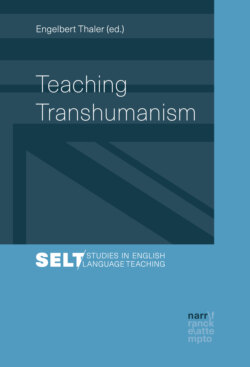Читать книгу Teaching Transhumanism - Группа авторов - Страница 37
На сайте Литреса книга снята с продажи.
1. Introduction
ОглавлениеIn a 2017 paper on teaching climate change, ecocritic Greg Garrard remarked that with regard to students today, “relatable” might be “the top candidate for the neologism most hated by English profs” (Garrard 2017: 123). He was referring to the tendency in more or less inexperienced readers to read a literary text on an affective level and on an affective level only, without critical or historical distance, and solely interested in whether a character was likeable or not. For the purpose of this chapter, this anecdotal remark will help us reflect on the value of relatability, especially in literature and culture pedagogy and the teaching of English. For this, it is important to recall that already in 1977, the theorist of literary education, Jürgen Kreft, has described this tendency of egocentric and uncritical reading in learners as “stubborn subjectivity” (1977: 379). His model of reading competence suggests that learners have to overcome stubborn subjectivity in reading for the sake of a more diligent way of analytical understanding and the eventual application in formal educational contexts. I want to take these two observations and revisit their educational valence in the context of this volume’s concerns about Teaching Transhumanism.
This chapter will proceed as follows: after a brief survey of the conceptual history of post- and transhumanism, it discusses the notion of literary learning, especially in its allegedly humanist appearance as a form of empowerment for critical thought and reflection and in light of current – maybe transhumanist? – forms of the digital. In particular, I will discuss the role of literary learning for media competence – I call that “media competence without new media” – and for aesthetic learning beyond the confines of traditional forms of, say, great books. The latter concern informs the section on “literary learning without literature”. The idea of relatability will be discussed as a potentially pivotal element of readerly reception and affective response as well as a teaching objective in need of further conceptual and analytical examination. Select, tentative suggestions for the practice of teaching are meant to point to the relevance and feasibility of these ideas for pedagogic interventions. Unsurprisingly, and because both critical reflections on the human condition and the practice of remote instruction via digital formats have become everyday concerns for educators lately, I will conclude this chapter with a few remarks on “posthumanism, post-Covid 19”.
